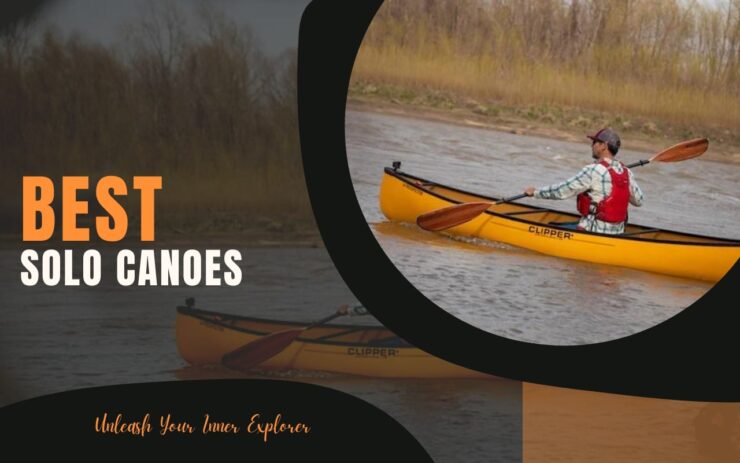Having fun on the water these days comes in many different ways. Spending time in the great outdoors has a lot of benefits, both for the body and the soul. It also helps that it is immensely fun to do it as it usually implies doing it with those closest to you.
Whether it is a river, a lake, or the ocean, swimming usually is not enough for people as they want more. There are many ways to make the most out of any given day, one of which is canoes. As a paddling boat for a single person, it has so much to offer for the canoer which is why it has been around for so long. Once a crucial survival tool is now a popular means of recreation and leisure.
Table of Contents
ToggleThe History of Canoes

The canoe is a simple yet versatile watercraft that has played an important role in human history for thousands of years. The origins of the canoe are difficult to pinpoint, as different cultures and civilizations have developed their own versions of the canoe independently.
However, some of the earliest known examples of canoes have been found in North America, dating back to around 8,000 years ago. These canoes were made by indigenous peoples using dugout log construction methods. They used them for transportation, fishing, and hunting.
Today, their connection to Native Americans is how most people think of them in a historical context. They are hardly the only people who made them an integral part of their daily lives.
The ancient Egyptians, Greeks, and Romans also used canoes for transportation and hunting. The Egyptian canoe, known as a “baris,” was a narrow, pointed boat propelled by paddles and sails. The Greeks and Romans knew them as “penteconters” and “actaeons,” respectively, and used them for fishing and trade.
The canoe as we know it today, a narrow, pointed boat propelled by paddles, was likely developed in the early modern period by various cultures around the world.
The indigenous peoples of North America continued to use and refine their canoe designs, while European explorers and settlers introduced new canoe construction methods and materials when they made first contact. The birch bark canoe was quickly adopted by European explorers and settlers for its lightweight and durability.
In the 19th century, the boat started becoming popular as a recreational activity in Europe and North America. Canoe clubs and competitions formed, and the canoe began to evolve into the recreational craft it is today.
Nowadays, canoeing is enjoyed by people all over the world as a way of exploring nature, transportation, fishing, hunting, racing, and recreation. Its simple design and versatility have made it a popular choice for people throughout history, and it remains a beloved pastime for many.
Modern Canoes
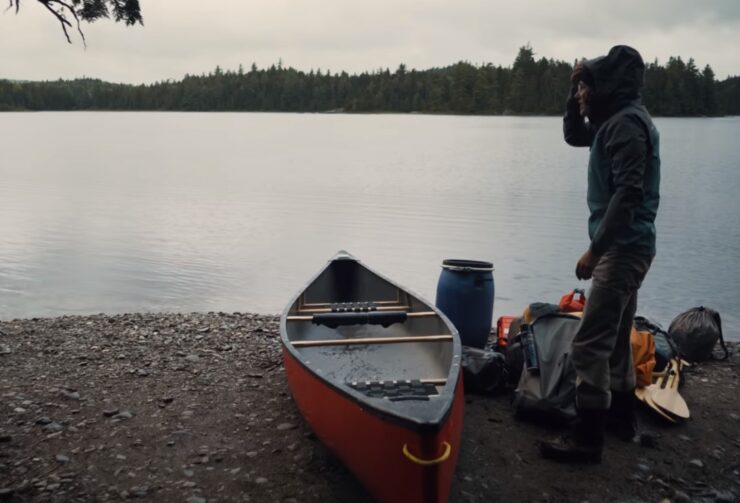
In the 21st century, recreational canoeing is a popular activity for individuals and families, as it allows them to enjoy the outdoors in a plethora of ways. Canoeing is also a popular competitive sport, with races being held at the local, national, and international levels.
Fishing remained a popular use for canoes, especially for serious, veteran fishing enthusiasts. Anglers can access remote fishing spots and quietly sneak up on fish. Canoes also serve as a great platform for fly fishing, as they allow anglers to reach shallow waters where larger boats cannot go. Hunting is another use for canoes, particularly for duck hunting, as they provide a stealthy way to approach and harvest game from an unsuspecting side.
Transportation is of course another historical use for canoes that remains ever crucial. They are still used for this purpose today in remote areas and for some indigenous communities. Numerous places rely on their canoeing skills in everyday life. Sporting activities and hobby canoeing are however the most spread as more and more people have a solo canoe stored and ready to go.
Canoe Types
There are different types of modern solo canoes, each designed for specific use. Some of the most common types include:
Recreational
A recreational canoe is designed for general use and is typically wider and more stable than other types of canoes. They are ideal for casual paddling in the calm, open waters, light-duty fishing, and some lighthearted exploring.
Touring
These canoes are made with longer trips in mind, usually in longer rivers and along ocean coasts. They are typically longer and narrower than recreational canoes. They are ideal for covering greater distances and are typically faster (and less stable) than other models. This makes them good for veterans but not so good for beginners.
Whitewater
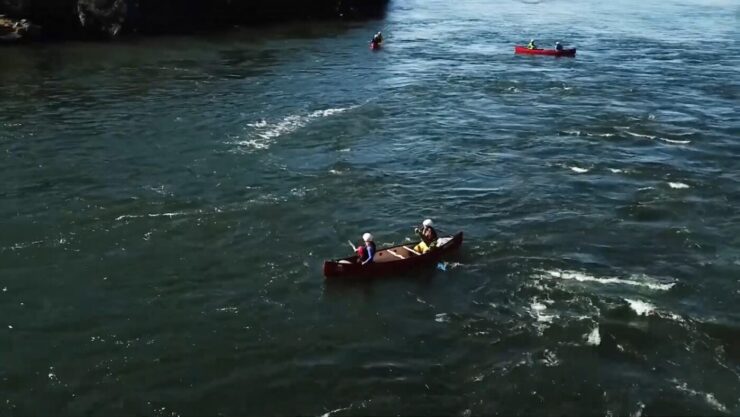
Another model is reserved for long-time canoers, these are specifically for fast-moving, turbulent waters. They have to be shorter, wider, and more maneuverable than other types. They are ideal for running rapids and other challenging water conditions considered extreme.
Fishing
Among the most popular types, angling canoes are made specifically for fishing and often feature rod holders, storage compartments, and other fishing-specific features. Anglers need lots of gear and equipment and their canoes have to be appropriately equipped.
Hunting
Extra storage, camouflage paint, and blinds for concealment are the main features of these varieties. Other than this, they are quite similar to fishing types.
Top Product Reviews of Best Canoes
1. Old Town Sportsman Discovery Solo 119
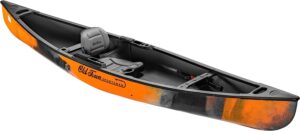
The first canoe we have for you today is great for fishermen. It is 11 feet 9 inches long and 32.5 inches wide. It weighs 56 pounds and it can support up to 354 pounds of load capacity. Very stable with plenty of deck room, it has all you may need for a fishing trip, but also a hunting or a fishing expedition. The dominant material of the hull is triple-layer polyethylene.

This canoe is quite roomy which is also important for comfort. The seat is very comfy and offers great back support. It is a kayak seat that is elevated and provides a good view and command. Adjustable foot braces are there too, as are flush-mounted rod holders and accessory mount tracks. Coolers and crates can be placed just about anywhere. Easy to paddle, stable, and sturdy, it is a great solo kayak for any need.
- Comfortable seat
- Plenty of space
- Easy to control
- Not very quick
- No accessories
2. Sea Eagle TC16
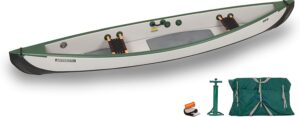
Here is something unique on this list, and not in just one way. First of all, this is an inflatable canoe which means it is light and very easy to both store and carry. Next up, it is technically a canoe for two people because it comes with two removable seats. They are not very comfortable however and have no backrests. Two paddles are included in the box, as are a pump and a carry bag.

When it comes to measurements, it is a big one at 16 feet long and 38 inches wide. Such a combination translates to superb tracking speed as well as above-average stability. The canoe only weighs 64 pounds and it can carry a ridiculous 915 pounds of load. Inflation only takes about 10 minutes, there is plenty of room for all of your stuff, and you can bring a pet with you if you want to canoe alone but still want some company.
- Inflatable and light
- Incredible load capacity
- Roomy
- Not easy to paddle alone
- Uncomfortable seats
3. Grummam 129 Solo

Would you like to own a canoe that is incredibly quick and meant for high-efficiency tracking? Well, you will need something long and narrow for this, which is exactly what this canoe brings to the table. At 12 feet 9 inches in length and 29.5 inches in width, it is the best option for such a canoeing experience. The canoe weighs 48 pounds and it supports 585 pounds of load.

A unique thing about this canoe is the dominant material it is made of, none other than Kevlar. What this means is out-of-this-world durability and longevity. The design is also quite interesting, reminiscent of an old-timey fighter plane. There is a lot of storage capacity on board in the long and spacious hull, making it a good choice for hunting, fishing, and camping.
- Strong kevlar build
- Very fast
- Good storage
- Uncomfortable aluminum seat
- No accessories
4. Wooden Boat USA Old Modern 16
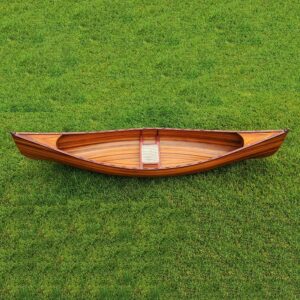
There is nothing quite like paddling in an all-natural wood canoe to get you back in touch with nature. Made of nothing but high-quality cedar wood, it is a handmade piece of art that will do everything that any other canoe can do. It is 16 feet long and 35.5 inches wide. It weighs 65 pounds, not too bad for an entirely wooden craft. It offers a superb load capacity of 600 pounds.
Each of these takes at least 500 hours of work to make, and each is completely unique. Artistically beautiful and very high quality, it is among the most unique canoeing models available on the market. The seat is not as comfortable and there is a lack of modern features like holders, mounts, and dedicated storage, but this one is all about leisure and enjoyment like in the good old days. It also does not have any accessories but you can order a matching paddle to go alongside this stunning vessel.
- Stunning design
- Handmade and unique
- Spacious
- Wood is high maintenance
- Very expensive
- No dedicated features
Buyer’s Guide
When choosing a canoe, it is important to think about why you need it and what you expect from it. Therefore, you should consider your intended use, the conditions in which you will be using the canoe, and your personal preferences. Here is a simple yet effective buyer’s guide to help you pick the right canoe for your needs in the form of factors worth considering.
Purpose
The first step in choosing a canoe is to determine your intended use. Will you be using the canoe for recreational paddling, fishing, hunting, or touring? Each type of canoe is designed for specific use cases, so it is important to choose one that is best suited for your intended use. Regretting it later is not a feeling you want.
Size and Capacity
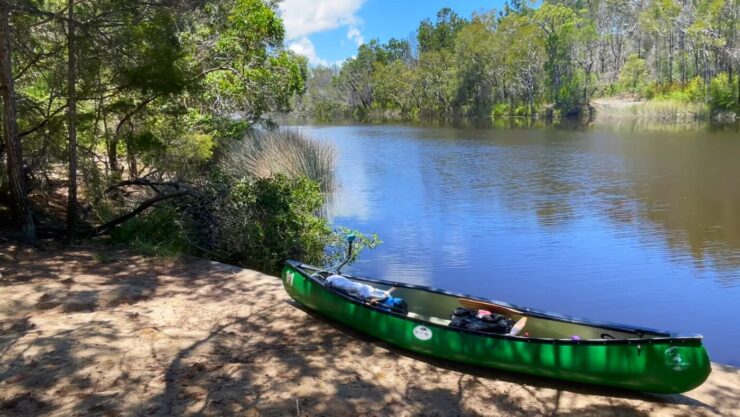
Consider the number of people who will be using the canoe, and the amount of gear you will be carrying. Make sure to choose a canoe that is large enough to accommodate your needs. In this article, we focus only on solo canoes but there should still be enough room for your intended gear.
Material
Canoes can be made of a variety of materials, including aluminum, fiberglass, plastic, and wood. Each material has its own advantages and disadvantages, so it is important to evaluate the conditions and how they agree with the material. For example, aluminum canoes are durable and affordable, but they are not as buoyant as other materials. Plastic canoes are lightweight and durable, but they are not as fast as canoes made of other materials. Wood is heavy and difficult to maintain, but visually stunning.
Stability
Consider the stability of the canoe when making your choice and think of it as one of the most important sides. A more stable canoe is better for beginners, while experienced paddlers do not really care for it as much.
Maneuverability
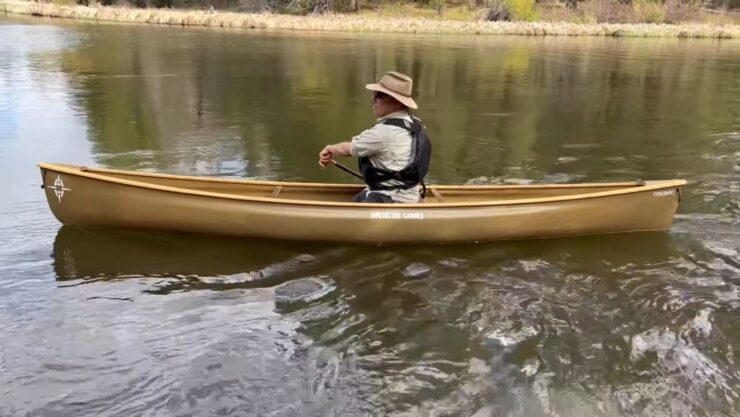
The maneuverability of the canoe deals with how easily it steers and turns. A more maneuverable canoe is better for running rapids and other challenging water conditions, while a less maneuverable canoe is better for covering greater distances and straights.
Price
Set a budget and stick to it, plain and simple. Canoes can vary greatly in price, so it is important to consider how much you are willing to spend on them. If you are serious about paddling, it should be an investment worthy of your money.
Transport and Storage
Of course, everyone has to think about how they will be transporting and storing the canoe. It is a cumbersome and heavy item that requires proper storage area and an optimal means of taking it to and from the water. Choose a canoe that is easy to store and that fits in your vehicle.
Adelaide Gentry, a seasoned kayaking enthusiast and expert, is the driving force behind KayakPaddling.net. With over a decade of experience navigating the world’s most challenging waterways, Adelaide combines her passion for adventure with a deep knowledge of kayaking to provide insightful and practical guidance for paddlers of all levels.
Related Posts:
- 16 Best Kayak For Beginners 2024 - Kayaking Adventure Gear
- Canoe vs. Kayak: Differences and Benefits You Need to Know
- Top 10 Best Tandem Kayaks To Paddle With Friends…
- 10 Best Fishing Canoes 2024 - All-Around and Trolling
- 13 Best Fishing Kayak Under $500 in 2024 -…
- Top 10 Best Inflatable Kayaks 2024: Portable + FUN

